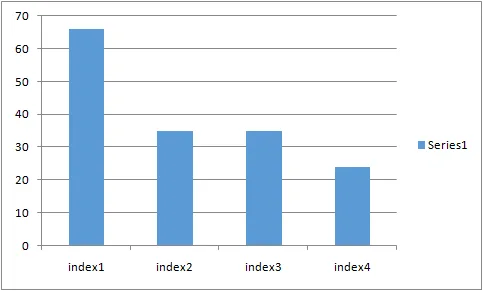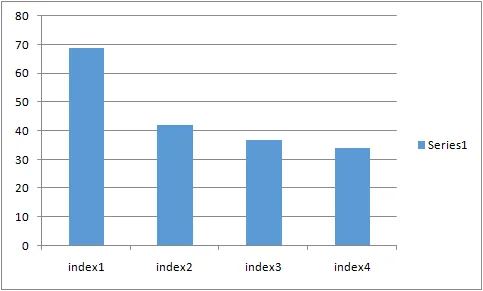Abstract
Parkland Middle School is one of 62 campuses in the Ysleta Independent School District. It opened in 1969 and serves predominantly military and lower-middle-class families. Parkland Middle School serves 805 students in grades 7 to 8 which is an increase of 25 % when compared with Five years ago enrollment.
Our major findings and conclusions are that the school met the standard in accountability rating in 2015-16 and got distinction designation in 2016-17 in addition to meeting the standards. All 7th and 8th-grade science teachers are StemScopes certified. Supplemental reading and lab activities, connections to math, and enrichment activities such as games and art projects. Websites are an additional resource that teachers have used to develop comprehension of science concepts. 100% of Algebra I students passed the Algebra I EOC exam. Parkland MS fully participated in the YISD Beginning Teacher Induction and Mentoring (BTIM) program for the 2016-2017 school year.
Some improvements that need to be made are that students must increase their ability to read proper rhythmic figures to improve music literacy. Teachers need more opportunities to attend training relevant to Science (CAST conference, NSTA Science Conference, etc.).
Introduction
Parkland Middle School is one of 62 campuses in the Ysleta Independent School District. Parkland Middle School opened its doors in 1969 and served predominantly military and lower-middle-class families. Parkland Middle School serves 805 students in grades 7 to 8. Five years ago, 680 students were served by the campus, which is a(n) increase of 25 %.
The student population is 5.09% African-American, 6.71% Anglo, 0.50% Asian, 86.09% Hispanic, 51.43% male and 48.57% female, with a low socioeconomic status of 80.50%. The staff population is 1.98% African-American, 19.80% Anglo, 0.00% Asian, 78.22% Hispanic, 29.70% male and 70.30% female.
The drop-out rate of 0%, and the average daily attendance rate for students is 96.49%. The average daily attendance rate for campus personnel is 95.34. There were 437 discipline referrals in 2017.
Parkland Middle School serves 136 English Language Learner students, 64 students in the Gifted and Talented program, 3.85% males, 4.10% females, and 0.37% Language English Proficient students, 79 students identified for 504 services, 120 students in RTI, 102 students served through special education services with 12 % and 5 % students tested, but not qualified for special education services.
About the Texas Education Agency
The Texas Education Agency is the state agency that oversees primary and secondary public education. It is headed by the commissioner of education. The mission of TEA is to provide leadership, guidance and resources to help schools meet the educational needs of all students.
It also serves as the evaluating body of schools in the Texas state.
Findings
The following are some of the major strengths of the school:
Strengths:
All our 7th and 8th-grade science teachers are StemScopes certified. Supplemental reading and lab activities, connections to math, and enrichment activities such as games and art projects. Websites are an additional resource that teachers have used to develop comprehension of science concepts.
100% of our Algebra I students passed the Algebra I EOC exam, 92% Met the Standard, and 54% attained Mastery level.
Our Algebra I enrollment increased from 68 students to 84, which is a 24% increase.
Use of instructional specialists in the areas of math, science, social studies and English to help design and implement effective lessons/strategies/interventions through PLCs.
Effective use of resources such as TTM, Fasttmath, TI-Inspire Calculators, Brain Pop,
Scholastic Magazines, Accelerated Reader, Rosetta Stone, Google Doc Slides, Achieve 3000,
English 3D, Image Grammar, Just Words, Dyslexia Words on Words (small group intervention) and Wilson Reading System.
Both Campus Interventionists are Certified within the Wilson Reading System.
Risk students were identified and placed into the Tier III program, where they receive one-on-one counseling and positive incentives and are assigned their own AP and counselor.
7-8 Grade Math, ELAR, Social Studies, and Science teachers offered tutoring after school, before school, and during school lunch period to all students from the beginning of the school year, with a focus on “at risk” and “high needs” students. These tutoring sessions have been offered on a voluntary basis, with teachers contributing their time for the benefit of the students.
Every math and ELAR teacher is involved with the ACE program, which is held before and after school. This program gives our students a broad spectrum of services and opportunities to excel in their endeavors.
ALL departments identified “Friday Night School” as a strength of the campus. This opportunity is provided to students who have fallen behind in their schoolwork.
Implementation of Co-Teaching with 7th-grade ELAR and Math for the 16-17 school year demonstrated great growth: Reading-ELL 17% growth; SpED 4% growth;
- Writing–ELL 19% growth; SpED 6% growth; Math–ELL 8% growth; SpED 14% growth.
- SSALT 2-3 work on Post-Secondary, transition, and vocational skills utilizing Unique curriculum, supplementary/real-life situations and practice CBI.
- Pull out SPED students during Advisory for one-on-one assistance.
- Coordinate with outside agencies who provide college readiness information to help students get into EPCC/University, for example, Upward Bound.
- 8th Math STAAR classes applied project-based learning to concepts that are traditionally low in grades 6-, eight such as fractions and measurements. 85% of the students in PBL classes passed the math STAAR exam.
- Establish a tutoring club for students to discuss pedagogy in the art of tutoring.
- Three English teachers have advanced degrees in the art of instruction.
- The ELL department meets once a week to share best practices, lesson plans, student strengths and weaknesses and to accommodate and differentiate lessons for the ELL population.
- ELL department initiates P.D. training material within a week after the training has been presented.
- Band students learn to read and understand musical terms, most of which are in Italian.
- As a part of a performing ensemble, students gain exposure to college professors who are brought in as clinicians and/or as judges at contests.
- Band and dance students have a writing assignment at least once a week in class. Comparing/contrasting performances, Critiques of their own performances as well as others, and creative writing with the use of prompts.
- All ELL kids are to be registered in choir as their elective. It will help them accelerate with the English language. In choir we rehearse the music daily, which gives the students the opportunity to have that repetition and practice of the language. Also, choral music breaks down each word by syllable so the students see the syllabification of it. It’s a great environment for them to improve their English language because all of the students will be working together, and they won’t be exposed or singled out. These students would highly benefit from being in choir, and progress will be made by the end of the first semester.
- Orchestra students are growing in their abilities with basic music literacy and are demonstrating wonderful sound quality. The students have demonstrated a high quality of music performance and have received fair evaluations from UIL performance benchmarks. Such students have improved in individual evaluations at district events.
- Art students learn to shoot digital photographs and then submit their photographs through YISD Google Drive. They have a book cart and Scholastic Art magazines for both SSR and references.
- They also learn social studies related to art history, culture, craft skills, and drawing techniques. The students discuss and compare artwork and then create a thinking map that applies to their discussions. From the thinking map, students write a summary paragraph.
- For science, art students learn the theory of color mixing, where graphite comes from, how clay is prepared, and the heat reaction of glaze.
- For math, art students work with perspective, proportions, ratios, how to use a compass, and measuring.
- Art students become familiar with the elements of Art and the Principles of Design.
- Mrs. Slater volunteers to work with my art students after school on Tuesdays and Thursdays.
- She has been actively involved in the ACE program for three years, offering a variety of art programs under the title of “Art Exploration.” We’re presently working a two murals for PMS.
- Graphical Reports
- Accountability Reports:
- 2016 Performance Index
State accountability ratings are based on four performance indices:
Student Achievement, Student Progress, Closing Performance Gaps, and Postsecondary Readiness. The bar graph below illustrates the index scores for this campus. The score required to meet each index’s target is indicated below the index description and as a line on each bar. In 2016, to receive the Met Standard or Met Alternative Standard accountability rating, districts and campuses must meet targets on three indices: Index 1 or Index 2 and Index 3 and Index 4.
(target score 60) (target score 30) (target score 26) (target score 13)
2017 Performance Index:
State accountability ratings are based on four performance indices: Student Achievement, Student Progress, Closing Performance Gaps, and Postsecondary Readiness. The bar graph below illustrates the index scores for this campus. The score required to meet each index’s target is indicated below the index description and as a line on each bar. In 2017, to receive the Met Standard or Met Alternative Standard accountability rating, districts and campuses must meet targets on three indices: Index 1 or Index 2 and Index 3 and Index 4.
(target score 60) (target score 30) (target score 26) (target score 13)
Needs for Improvements
Increase the number of reading classes other than SSR. Students must increase their ability to read proper rhythmic figures to improve music literacy. They must be given music that improves their chances of receiving superior evaluations during UIL benchmarks. Students must grow in foundational vocabulary that carries not only to future music classes but also to life as American citizens. Band can make better use of incorporating history and science into our curriculum. Basic math fact fluency of rational numbers is a major area that must be addressed in order to prepare our students for middle school work, as well as being prepared for high school and college. These basic skills continue to be areas of weakness and must be improved to do the level of work required in 6-8 grade math TEKS. We will continue to include remedies such as Fast Math and Think Through Math during the Advisory Period. SpEd and ELL populations need more remediation in Math, ELAR, Science, and Social Studies, which will provide us the opportunity to meet all systems safeguards. We failed to meet the system’s safeguards in ELL reading, science, social studies, writing and special education reading. 7th-grade ELAR needs to be double-blocked next year to accommodate the Reading and Writing STAAR assessments. ELAR team identified needs with Figure 19, inferencing, summarization, and comparing across genres and non-fiction.
All departments identified that continual need to keep the teacher/student ratio below 25:1. – The ELAR department lacks academic vocabulary alignment across the grade levels. 8th grade graduation ceremony to celebrate student achievement. Resource caseloads are less than twenty students, and benefits are a focus on providing a higher rigor of grade level curriculum in preparation for the state exam. More SPED instructional support from the Central Office in regard to PD and assistance in the classroom.
The science team identified needs in interpreting various types of graphs, including line graphs and pictographs, process skills such as measurement and metric units, and sample questions.
Conclusion
The Parkland Middle School is one the best-performing schools in the town; although it needs little room for improvement, it still excels in most of the areas of education. It can grow further if it focuses on its weaknesses. In this way, it may serve better than today and make its students good citizens.
Cite This Work
To export a reference to this article please select a referencing stye below:









